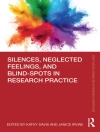Wonders Of Science: Mini-Book Series 2021
Quirky Science is the third book in the ‘Wonders of Science.’ series’, and was written with the intention of showing a number of outstanding examples of what could be called quirky scientific principles & practices, which when looked at closely and critically examined seem impossible in both theory & practice, breaking all laws of science and seemingly impossible to be true. The concepts & ideas behind the five areas of scientific postulations & discoveries selected for study will convey the sentiments expressed above.
Areas of Study:-
(a) ‘Wave-Particle Duality’, is usually defined in terms that it is a fundamental property of matter, whereby at one moment it appears as a particle, and yet at other times as a wave. Up to date, there has never been a definitive scientific explanation of how a particle of light can be both a particle and a waveform at the same time. Over the centuries there have been many scientific experiments carried out to determine what light is; and in equal measure, there have been convincing results showing that light is both a wave and a particle.
(b) What is Quantum Theory? It is the theoretical basis of modern physics that explains the nature and behavior of matter and energy on the atomic & sub-atomic levels. The nature and behavior of matter & energy at that level is sometimes referred to as ‘Quantum Physics’ or ‘Quantum Mechanics’. According to this theory matter & energy are composed of tiny units of electromagnetic energy called quanta. Quantum Theory is used to explain such phenomena as the photoelectric effect.
(c) E = mc2 is most properly the most famous equation in the world and made the originator of the equation an Albert Einstein Physicist & Nobel Laureate, one of the most famous and celebrated scientists of all time. The equation is instantaneously recognized by all those with just a minimum of scientific curiosity, and to this day is still printed on T-shirts and the like. Most people who are interested know the equation states that ‘energy equals mass times the speed of light squared’.
(d) Space-Time Continuum: Coming out of Einstein`s work on ‘ General & Special Relativity ‘ the concept of a ‘Space-Time Continuum ‘ was born, initiated by Hermann Minkowski based on the work of his former student Albert Einstein. It is a mathematical model that joins space & time into a single idea. This space-time model has three dimensions of measurement plus one dimension of time.- now called ‘Minkowski Space’
(e) Black Holes & Singularities: The first mention of the concept of a dark star, which could not be seen because gravity stopped light escaping to indicate its presence, was proposed by John Mitchell an English cleric back in 1783. He even suggested that it may be possible to discover its presence by looking at the behavior of stars whose orbit maneuvers suggested the presence of an unseen heavy object.
Sobre el autor
Authors Page:Edward Hughes is the author of the Mini-Book Series ‘Wonders Of Science’ which includes six books exploring topics on the evolution of life, the solar system, mysteries of physics, creation, infinity, and perspectives.Edward`s life-long passion for science started as a small boy and burned ever brightly as he progressed through life, as he obtained an MSc and while he worked abroad in the Middle East and North Africa as a project engineer.When Edward retired after 17 years as a University lecturer, he decided to explore many of the wonders and mysteries in the Universe and beyond, in this debut series of mini-books.The aim is to spark that passion for science in the next generation, plus to those who have always loved science, and attempt to provide the answers to inquisitive minds or to provide food for thought.












